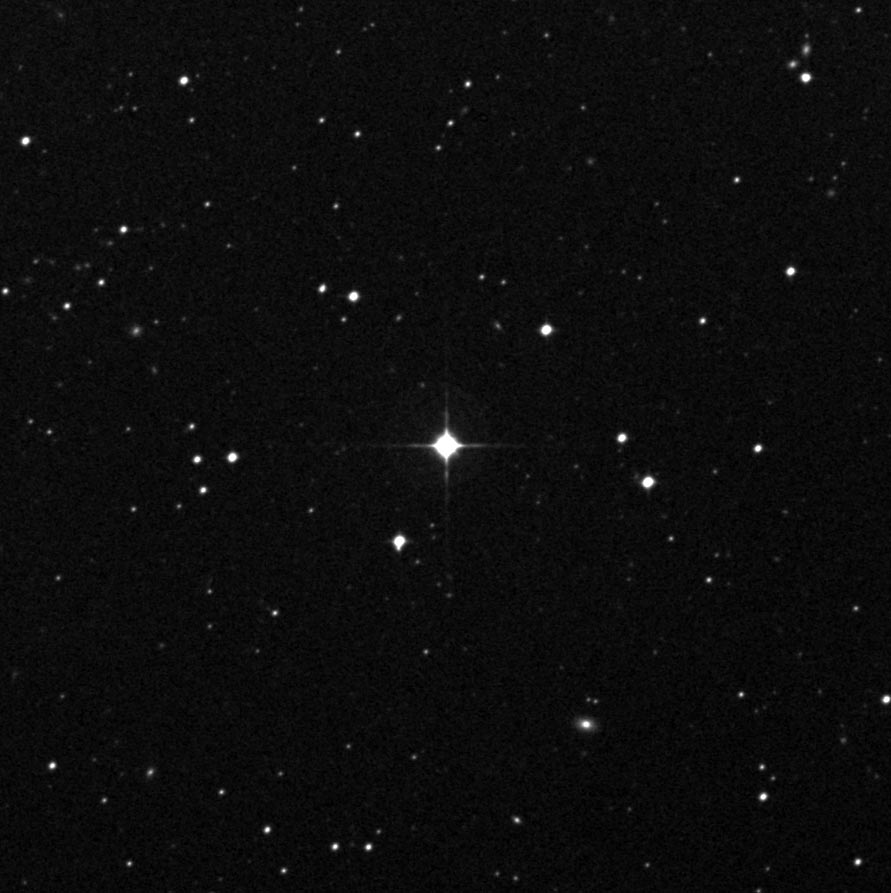Astronomers Find “Gold Standard” Star in Milky Way With the Widest Range of Elements

The star HD 222925 is a ninth-magnitude star located toward the southern constellation Tucana. Credit: The STScI Digitized Sky Survey
In our sun’s cosmic neighborhood of the
Identifying these different elements in a single star will help astronomers understand what’s called the “rapid neutron capture process,” or one of the major ways by which heavy elements in the universe were created. Their results are posted online and have been accepted for publication in the Astrophysical Journal Supplement Series.
“To the best of my knowledge, that’s a record for any object beyond our solar system. And what makes this star so unique is that it has a very high relative proportion of the elements listed along the bottom two-thirds of the periodic table. We even detected gold,” Roederer said. “These elements were made by the rapid neutron capture process. That’s really the thing we’re trying to study: the physics in understanding how, where and when those elements were made.”
The process, also called the “r-process,” begins with the presence of lighter elements such as iron. Then, rapidly—on the order of a second—neutrons are added to the nuclei of the lighter elements. This creates heavier elements such as selenium, silver, tellurium, platinum, gold, and thorium, the kind found in HD 222925, and all of which are rarely detected in stars, according to the astronomers.
“You need lots of neutrons that are free and a very high energy set of conditions to liberate them and add them to the nuclei of atoms,” Roederer said. “There aren’t very many environments in which that can happen—two, maybe.”
One of these environments has been confirmed: the merging of neutron stars. Neutron stars are the collapsed cores of supergiant stars, and are the smallest and densest known celestial objects. The collision of
This star can then be used as a proxy for what one of those events would have produced. Any model developed in the future that demonstrates how the r-process or nature produces elements on the bottom two-thirds of the periodic table must have the same signature as HD 222925, Roederer says.
Crucially, the astronomers used an instrument on the
Anna Frebel is a co-author of the study and professor of physics at the Massachusetts Institute of Technology. She helped with the overall interpretation of the HD 222925’s element abundance pattern and how it informs our understanding of the origin of the elements in the cosmos.
“We now know the detailed element-by-element output of some r-process event that happened early in the universe,” Frebel said. “Any model that tries to understand what’s going on with the r-process has to be able to reproduce that.”
Many of the study co-authors are part of a group called the R-Process Alliance, a group of astrophysicists dedicated to solving the big questions of the r-process. This project marks one of the team’s key goals: identifying which elements, and in what amounts, were produced in the r-process in an unprecedented level of detail.
For more on this research, see Astronomers Discover “Gold Standard” Star in Milky Way.
Reference: “The R-Process Alliance: A Nearly Complete R-Process Abundance Template Derived from Ultraviolet Spectroscopy of the R-Process-Enhanced Metal-Poor Star HD 222925” by Ian U. Roederer, James E. Lawler, Elizabeth A. Den Hartog, Vinicius M. Placco, Rebecca Surman, Timothy C. Beers, Rana Ezzeddine, Anna Frebel, Terese T. Hansen, Kohei Hattori, Erika M. Holmbeck and Charli M. Sakari, Accepted, The Astrophysical Journal Supplement Series.
arXiv:2205.03426
Read More: Astronomers Find “Gold Standard” Star in Milky Way With the Widest Range of Elements

